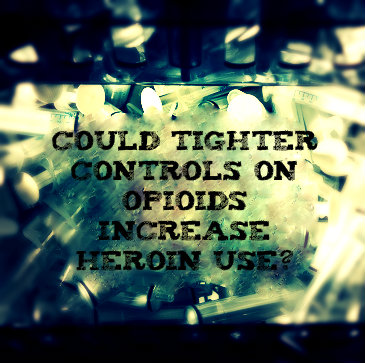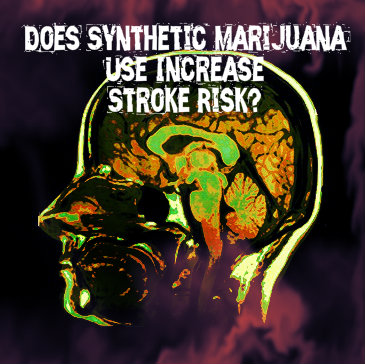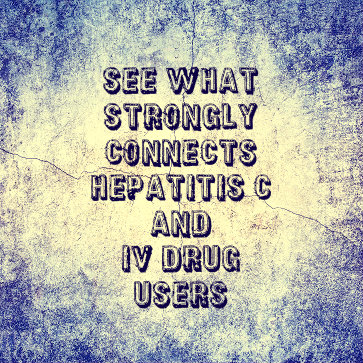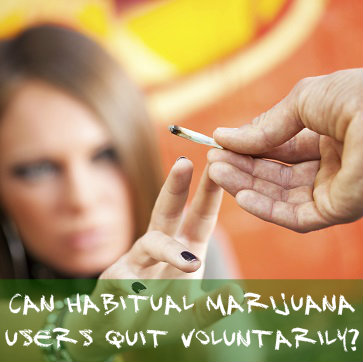Self-reporting of drug use is an approach that uses interviews, questionnaires or surveys to determine whether a person uses drugs, has previously used drugs or currently has drugs in his or her system. This method differs from objective urine testing, a universally accepted approach that relies on chemical measurements to detect the presence of drugs. In a study published in October 2013 in the journal Addictive Behaviors, a team of researchers from several U.S. institutions compared the accuracy of self-reported drug use by teenagers and young adults in drug treatment to the accuracy of urine testing. The researchers found that individuals in these age groups tend to self-report their level of drug use with relatively consistent truthfulness.
Self-Reporting Drug Use
Drug treatment professionals and researchers use self-reporting to gather a range of statistics from small and large populations of drug users. Examples of the information commonly acquired include the absence or presence of drug use, frequency of drug use, larger patterns of drug use and the presence of underlying factors that may contribute to drug use frequency or drug use patterns in some way. Depending on the scope of an interview, survey or questionnaire, self-reporting may provide data on short-term drug usage, annual drug usage or lifetime drug usage. Some professionals and researchers use self-reporting to answer relatively simple questions about drug usage, while others use the technique in connection with complex formulas designed to gather very specific, detailed information from participants.
Urine Drug Testing
Urine drug testing is a specific form of urinalysis designed to detect the presence of commonly abused substances such as opioid narcotics, marijuana and other forms of cannabis, cocaine, amphetamine, methamphetamine and phencyclidine (PCP). In some cases, urine testing directly detects the presence of these substances; in other cases, it detects the breakdown products that these substances form after entering the bloodstream. A urine drug test only tells the person conducting the test whether an individual has used a particular substance within a narrow time span of roughly one to three days. It does not provide information about such factors as the method of drug use, the specific moment of drug use or the amount of drugs taken at a given time. Testers typically confirm the results of a urine drug test with a follow-up testing procedure designed to guarantee the final accuracy of the rendered results.
Accuracy Of Self-Reporting On Drug Use
Because urine drug testing provides an objective measurement of drug use, experts in the field commonly view this form of testing as the standard tool for detecting the presence of drugs in a person’s system. However, in certain situations, it is not necessarily convenient or practical to perform urine testing. In addition, the proper interpretation of testing results is sometimes relatively complex and time-consuming. For these reasons, doctors and other professionals sometimes have a real need for other ways of obtaining the information they require.
In the study published in Addictive Behaviors, researchers from three U.S. universities sought to determine if self-reporting of drug use can act as a reliable substitute for urine drug testing. They explored this question with the help of 152 teenagers and young adults enrolled in programs primarily geared toward the treatment of addictions to opioid narcotic drugs. Some of the participants received short-term (two-week) treatment with group/individual counseling and a standard combination of two opioid addiction medications called buprenorphine and naloxone. Others received longer-term (12-week) treatment with counseling and the combination of buprenorphine and naloxone. Self-reports and urine testing results were obtained from each group at regular intervals. Each participant received a small financial reward as an incentive to keep participating in the study.
After completing the study’s main phase, the researchers concluded that the teens and young adult participants provided self-reported information on drug use that generally matched up well with the objective measurements provided by urine drug testing. Generally speaking, these findings were unaffected by factors such as the amount of money received for participation and the specific nature of each individual’s drug addiction. However, the study’s authors also concluded that teens and young adults who received longer-term counseling and medication treatment had a greater tendency to under-report their drug use than teens and young adults who received shorter forms of treatment. Specifically, these individuals downplayed their involvement in both opioid and cocaine use.
So Is Self-Reporting Accurate Enough For Solo Drug Testing Use?
The authors of the study published in Addictive Behaviors believe that their findings demonstrate that teens and young adults in treatment commonly self-report their drug use accurately enough to give doctors a potential secondary alternative to urine drug testing. However, they also believe that the level of accuracy is not high enough to do away with the need for urine testing, especially in teens and young adults participating in relatively long-term treatment programs. And Save Your Life Or The Life Of A Loved One
Get Drug Rehab Counseling Help Now And Save Your Life Or The Life Of A Loved One!
Prescription painkiller abuse has grown large enough to gain the attention of pharmaceutical companies, doctors, addiction experts, and even the federal government. There are things which can be done to try and halt the abuse of prescription medications. However, those in the know say that when access to opioids is shut down, we can expect substance abusers to move on to heroin.
Made from a synthetic form of opium, opioids are heavy-duty pain relievers like Oxycodone (Percocet), Hydrocodone (Vicodin), OxyContin (a longer-lasting form of Oxycodone) and codeine. Hydrocodone and Oxycodone are usually mixed with aspirin or acetaminophen to produce longer-lasting pain relief.
 Opioids – Number One Prescribed Medication – Problem In The U.S.
Opioids – Number One Prescribed Medication – Problem In The U.S.
Opioids are the number one prescribed medication in the nation and are responsible for the vast majority of drug-related injuries and fatal overdoses, partly because people view them as safer than street drugs. Their wide availability means more drugs are in the hands of abusers.
Most opioid addicts started with a doctor’s prescription for a legitimate need. People who take more pills for a longer period than was prescribed can easily become addicted. Young people who use them recreationally can also quickly form a habit.
Thomas McClellan, the former Deputy Director for the White House Office of National Drug Control Policy, says if we can address these three issues the problem could be controlled:
3 Opioid Issues
- Over-Prescribing – Doctors want to control pain because it promotes healing and fosters a strong doctor-patient bond. Banning opioids outright will not work, but perhaps changing the standards of care which guide prescribing could.
- Insufficient Monitoring – Efforts are underway in most states to establish state-level monitoring programs. Under these programs every doctor who prescribes, patient who picks up and pharmacy that fills a controlled drug prescription will go on record. This should help reduce over-prescribing by doctors and keep patients from going from doctor to doctor in search of prescriptions.
- Patient Misuse – The Federal Drug Administration would like to see Hydrocodone reclassified to Schedule II so that it would have more oversight and be less accessible to patients. Under Schedule II constraints such as limiting automatic refills could help to reign in misuse.
How Tightly Controlling Opioids Could Increase Heroin Use
Would these measures stop painkiller abuse? Perhaps. But even if we succeed, experts predict that drug use will simply shift to another opiate: heroin.
Opioids are synthetic opiates (forms of opium) while heroin is a non-synthetic form. In other words, the drugs are somewhat related and produce similar results. Heroin costs about one half as much as synthetic opioids. So if opioids become more expensive and harder to get, experts predict that users will just switch to heroin.
Communities need to be ready for the shift that will most likely happen as a result of opioid crackdowns. The next question will be how to handle the heroin crisis.
If you or a love one needs help finding a drug rehab facility contact an Elements Recovery Advisor now! 855-763-6488
According to the National Institute on Drug Abuse, synthetic marijuana is now second to only cannabis in terms of popularity. Users can achieve similar effects to natural marijuana, but the risks are multiplied.
A stroke and smoking spice study by University of Southern Florida researchers involved two young and healthy siblings that experienced acute ischemic strokes soon after smoking spice, also known as K2. Ischemic strokes occur when an artery to the brain becomes blocked.
 Dangerous Side Effects Of Synthetic Pot
Dangerous Side Effects Of Synthetic Pot
- Stroke
- Seizures
- Heart arrhythmia
- Heart attacks
- Psychosis
- Hallucinations
Senior author W. Scott Burgin, M.D., professor of neurology at the USF Health Morsani College of Medicine and director of the Comprehensive Stroke Center at Tampa General Hospital, said that there was some concern that the siblings could share a genetic proclivity to stroke. However, the physicians checked carefully for such a situation and did not find any genetic clues.
The researchers say the siblings experienced heart-derived strokes and that the brothers had no heart-related health problems, and that more investigation is needed to understand the potential connection between synthetic marijuana and stroke.
Properties Of Synthetic Marijuana
Synthetic marijuana is a mixture of herbal plant materials resembling potpourri that are coated with a chemical mixture intended to mimic the effects of cannabis. The mixture can be significantly more potent than cannabis because the psychoactive ingredient binds directly to the cannabinoid receptors in the brain.
The dangers of using synthetic marijuana also lies in its composition, which includes chemicals that have not been tested. Additionally, because the drug is not regulated, there is no consistency in the types or amounts of chemicals used. Dr. Burgin explains that consumers that purchase synthetic marijuana are taking a gamble with their health and their brain.
In Florida, any activities connected to selling, delivering or possession of synthetic marijuana is a third-degree felony. It’s difficult to purchase the drug at a brick-and-mortar establishment, but the drug is still available for Internet purchase.
The authors of the study urge physicians to be more aware of the potential problems associated with synthetic marijuana. When an otherwise healthy young person is treated for a stroke or heart attack, the patient should be asked about drug use. Patients will not generally volunteer drug use information and synthetic marijuana does not appear in a drug test.
Meanwhile, an editorial appearing alongside the USF findings cautions physicians that these case studies represent only two instances of stroke associated with synthetic marijuana use, even as the drug is becoming more widely used.
However, John C.M. Brust, M.D., professor of clinical neurology at Columbia University College of Physicians and Surgeons, notes that because marijuana is tied to ischemic stroke, and synthetic marijuana tends to only amplify the risks seen with natural cannabis, it is likely that strokes will be seen more often in emergency rooms.
Read More About The Problems And Dangers Of Synthetic Marijuana
Healthcare treatment is often completely separated between those that are seeking mental health, substance abuse and medical health treatment. Communities have recently been integrating all of this patient care in one facility. For patients this means better care management as they are treated fully for all their needs with a network of health providers who can work together in helping the patient heal both mentally and physically, possibly including chronic pain management care.
Mental And Physical Health Connections
Research studies are more commonly finding links between mental and physical health.
Medical Ailments May Induce:
- Depression
- Anxiety
- Other mental illnesses
Mental Disorders May Conversely Affect A Person’s Ability To:
- Eat properly
- Exercise
- Take care of their physical health
A study by researchers at the George Washington University School of Public Health and Health Services (SPHHS) looked at the effects of integrating medical health with mental health, and is the first to study the integration of substance abuse treatment with medical health.
Doctors Need To Treat Both The Body And Mind For Best Recovery And Long-Term Management
 As doctors learn more about the mind-body connections, they see the need to treat both the patient’s body and mind in order for the best recovery and life-long management. The research team at SPHHS reported that many community health centers, for example, were providing mental health treatment. Leighton Ku, PhD, MPH, Professor of Health Policy and Director of the SPHHS Center for Health Policy Research, asserts that these centers are leading the way in redefining primary health care to include both mental and medical treatments. Mental Health Treatment Centers have also moved towards treating the individual as a whole, both mentally and physically.
As doctors learn more about the mind-body connections, they see the need to treat both the patient’s body and mind in order for the best recovery and life-long management. The research team at SPHHS reported that many community health centers, for example, were providing mental health treatment. Leighton Ku, PhD, MPH, Professor of Health Policy and Director of the SPHHS Center for Health Policy Research, asserts that these centers are leading the way in redefining primary health care to include both mental and medical treatments. Mental Health Treatment Centers have also moved towards treating the individual as a whole, both mentally and physically.
The SPHHS study reported that the larger the size of the center the more likely it was to offer mental health services. Also, if there were more psychologists and psychiatrists in the area they were better able to offer behavioral health services.
Available Substance Abuse Care – Crucial For Overall Recovery
While more community health centers are offering mental health care, the study revealed that not as many centers are offering substance abuse care or crisis counseling. These centers are missing an integral part of the treatment process that is important for the overall recovery of their patients. Many larger professional treatment centers can offer the substance abuse care and crisis counseling that is needed by those struggling also with mental health conditions. This is an important part of long-term recovery.
Because of billing complications community health centers in some states are not as likely to offer substance abuse treatment or 24-hour crisis counseling. Drug and alcohol abuse most certainly affects the body, both mentally and physically. Treatment of one without the other can affect the results of treatment for the individual.
The lead author of the SPHHS study, Emily Jones, PhD, MPP, believes that if more people can be provided drug and alcohol abuse treatment – at any hour when they desperately need crisis counseling – the patient will have a better chance at recovery. Dr. Jones originally started this study and now works for the Office of the National Coordinator for Health Information Technology at the U.S. Department of Health and Human Services.
Complete Healing In Health Care
Complete healing happens when both body and mind are free of pain and suffering. Researchers like Jones find hope for integrating services as other research studies are finding multiple links between physical illnesses and mental illnesses. As doctors, psychiatrists, psychologists and substance abuse treatment professionals combine their forces in health care, more patients will find healing and the recovery process will be improved as it meets the needs of each patient on a more comprehensive level.
Read More About Mental Health And Drug Abuse Care
A new drug that has devastating consequences for its users may have finally been confirmed to have made it into the U.S. The drug is called Krokodil, and it first appeared in Russia as a cheap, homemade substitute for heroin. The name, which means crocodile in Russian, refers to the scaly sores that appear almost immediately after using this drug. The sores begin under the skin and can be so bad that the drug has been described as flesh-eating. The result is horrific and can lead to scarring, amputation, and even death.
Krokodil Beginnings In Russia
 Homemade injectable opioid drugs are nothing new in Russia. Resourceful people there have been creating and using their own drugs to get high for decades. In the 1990s, the heroin trade from Afghanistan increased and drug users did not need to make their own substitutes. Heroin addiction became a serious and widespread problem in the country.
Homemade injectable opioid drugs are nothing new in Russia. Resourceful people there have been creating and using their own drugs to get high for decades. In the 1990s, the heroin trade from Afghanistan increased and drug users did not need to make their own substitutes. Heroin addiction became a serious and widespread problem in the country.
Over the last few years, the Russian government has targeted illegal opium sales to try to solve the problem of heroin addiction. As sources of heroin dwindled and the product became more expensive, the practice of making heroin substitutes at home came back into favor. Krokodil is easily made from codeine, a prescription opioid, and other household chemicals.
Krokodil gives the user a high similar to heroin, but with even worse side effects. The green and black colored sores and ulcers begin to appear soon after the first use, and get worse as use of the drug continues. The drug, with the chemical name desmorphine, as well as the other chemicals that go into making it, tend to clump up and stay inside blood vessels all over the body. The clumps lead to infections and sores that spread and worsen.
Disputed Krokodil Cases In The U.S.
Experts in the field of illegal drugs have long feared that Krokodil would eventually show up in the U.S. Several disputed cases have been reported, including a doctor in the Chicago area who is convinced he treated two young women with the sores caused by Krokodil use. Cases in California and other states were also unconfirmed.
Reputable Case Of Krokodil Use In The U.S.
Now, it would seem that the worst fears of some have been vindicated. Two doctors working at St. Mary’s Health Center outside of St. Louis, Missouri, have published their findings from treating a victim of Krokodil use. They treated the 30-year-old man in December 2012. He had sores all over his legs. His skin was rotting away in places, and he had lost a finger on one hand to the infection. He told the doctors that he had been injecting himself with a synthetic heroin substitute that he made using codeine, gasoline, and other household chemicals. The admission, along with the sores, made a strong case that the doctors did treat a young man who had been using this scary new form of heroin.
Krokodile – Possible Future U.S. Epidemic?
If the doctors are right and Krokodil is now being used in the U.S., the implications are very serious. If drug users addicted to heroin and other opioids learn how to make this drug and can do so inexpensively, it could represent a new epidemic, much like what has been seen in Russia. The disfiguring effects of using Krokodil, as well as the addictive nature of the drug, mean that many people will suffer, and even die from using it. The Drug Enforcement Agency has yet to confirm the presence of Krokodil in the U.S., but with reports coming in from emergency rooms across the country, that confirmation does not seem to be far off.
Read More About Krokodil Claiming U.S. Victims
29 Nov 2013
Why ADHD And Drug Abuse Commonly Occur Together
According to psychiatric literature, as many as five percent of the American population deals with attention deficit hyperactivity disorder (ADHD), and half of those people may also have a problem with substance abuse. That’s because the two conditions frequently appear together, a relationship referred to as comorbidity. Because both stem from dysfunction in the reward system, it can be hard to untangle and treat the conditions simultaneously.
Connection Factors Between ADHD And Drug Addiction
 Past studies of twins have shown a high comorbidity between ADHD and drug addiction. These studies point to shared genes which make a person more susceptible to both conditions. When a person has a genetic predisposition combined with environmental risk factors, the likelihood of the two conditions arising increases. To compound the problem, other studies reveal that people with ADHD are at greater risk for earlier onset of drug abuse, more serious abuse and a harder time remaining abstinent.
Past studies of twins have shown a high comorbidity between ADHD and drug addiction. These studies point to shared genes which make a person more susceptible to both conditions. When a person has a genetic predisposition combined with environmental risk factors, the likelihood of the two conditions arising increases. To compound the problem, other studies reveal that people with ADHD are at greater risk for earlier onset of drug abuse, more serious abuse and a harder time remaining abstinent.
Diagnosing Adult ADHD
Both ADHD and substance abuse are diagnosed by using established tools which are essentially checklists of symptoms. In order to diagnose ADHD, a person must demonstrate a minimum of six symptoms of either hyperactivity or distractibility, but not necessarily symptoms in both categories. Doctors may be hesitant to diagnose adult ADHD, and even more so when a patient appears to be dealing with substance abuse as well, just because it requires a bit of detective work and a delicate balancing act in terms of treatment.
One way doctors can diagnose adult ADHD is by asking open-ended questions such as, “Why do you suspect that you may have ADHD?” this may result in symptoms being displayed without prodding. If this doesn’t happen right away, doctors can ask clarifying questions such as, “What does your work life look like?” or “Describe several of your closest relationships.” In terms of substance abuse, it is best to be forthright with questions such as, “Do you use any substances? “followed by, “Describe your substance use.”
A long-term picture will be the most accurate, so asking about grade school and high school experiences can be helpful. However, in some cases a parent may have performed the role of compensating presence – monitoring homework, ensuring the student was on time, helping them keep things organized, etc. – so with adult patients asking about college life or work life may actually provide the clearest idea of what symptoms are present. Whenever possible, having the added perspective of another person such as a spouse, parent or sibling is useful.
Symptoms Doctors Will Explore When Diagnosing ADHD
- Trouble focusing on a single task. The person has difficulty reading, leaves tasks unfinished, is not a good listener, engages in a lot of daydreaming and frequently loses things.
- Trouble staying focused. The person finds it hard to plan and organize. Time management is a problem issue. The person has difficult in recognizing potential consequences of actions.
- Trouble with motor control. The person exhibits restless, non-goal oriented movement and they can’t sit still for extended periods of time. It is important to note that the person who doodles and draws or who packs their daily schedule may also be showing signs of difficulty.
- Trouble with self-control. The person is impulsive, talking and acting without thinking. They frequently interrupt others and have little patience.
What These Brain-Function Symptoms Reveal
Each of these symptoms reveals sluggishness within the brain’s mesolimbic dopamine system, or reward pathway. Healthy people feel a certain amount of elation when they embrace another, hear beautiful music or engage in fun physical activity, and the reward circuitry in the brain is pre-set to respond positively to these things. When a person has an ill-functioning reward system, they may engage in riskier behaviors in order to stimulate or activate the reward response.
Treatment For ADHD And Substance Abuse
Drug use exacerbates this problem. Therefore, the best treatment will result from a multi-pronged approach. Persons with comorbid ADHD and substance abuse will probably require individual counseling, support group therapy, carefully monitored medication therapy and specific lifestyle changes.
Read More About Addiction And Mental Disorders
Hepatitis C is a form of serious, liver-damaging illness triggered by infection with a virus commonly known as the hepatitis C virus (HCV). Current evidence indicates that, throughout the U.S. and the rest of the world, the majority of new cases of this illness stem from the unsanitary injection of IV drugs (intravenous drugs). In a study published in June 2013 in the Harm Reduction Journal, a multi-institution research team reviewed some of the potentially overlooked factors that contribute to the ongoing connection between IV drug use and HCV infection. The researchers concluded that patient-doctor miscommunication and lack of access to required resources have a considerable impact on the reinforcement of this connection.
How Is Hepatitis C Spread?
 Hepatitis C is one of four viral diseases that get their names because they damage function inside the human liver. It is a blood-borne illness that typically occurs when an individual with HCV knowingly or unknowingly exposes others to his or her infected blood. Common routes for this exposure include intentional or accidental needle sticks or injections, as well as the accidental entry of infected blood through a cut or through the mouth. Additional, less common potential routes of exposure include mother-to-child transmission inside the womb, organ transplant procedures, kidney dialysis procedures and blood transfusions.
Hepatitis C is one of four viral diseases that get their names because they damage function inside the human liver. It is a blood-borne illness that typically occurs when an individual with HCV knowingly or unknowingly exposes others to his or her infected blood. Common routes for this exposure include intentional or accidental needle sticks or injections, as well as the accidental entry of infected blood through a cut or through the mouth. Additional, less common potential routes of exposure include mother-to-child transmission inside the womb, organ transplant procedures, kidney dialysis procedures and blood transfusions.
Hepatitis C Symptoms
The hepatitis C virus can produce either acute (short-term) infections or chronic (long-term) infections. In both cases, affected individuals often have few or no early symptoms of the changes going on inside their livers. If early symptoms do occur, they are as follows.
Early Hepatitis C Symptoms
- Jaundice
- Loss of energy
- Spikes in body temperature (i.e., fevers)
- Swelling in the abdomen
- Abdominal pain in the liver region
- Nausea and vomiting
- Declining appetite
Eventually, people affected by chronic hepatitis C can develop serious or potentially fatal cases of cirrhosis (liver scarring) or liver cancer. Roughly 75 percent to 85 percent of people who contract hepatitis C develop the chronic form of the illness.
IV Drug Use And Risky Behaviors
IV drug users have an uncommonly high rate for hepatitis C (and a number of other serious, infectious diseases) for several reasons. First, the introduction of a hypodermic needle into a vein provides direct access to a person’s bloodstream. In combination with poor needle-related hygiene, this method of drug use provides the hepatitis C virus with a very easy avenue for entry into the human body. The most common unhygienic practice associated with transmission of the virus is the sharing of dirty needles among two or more drug users. In addition, people who take drugs intravenously often establish other patterns of behavior that can further increase their risks for HCV exposure. Examples of these harmful behavioral patterns include having unprotected intercourse with intimates and engaging in sex-for-drugs exchanges with others.
Factors For The Connection Between Hepatitis C Infections And IV Drug Use
In the study published in the Harm Reduction Journal, researchers from seven U.S. institutions looked at some of the lesser-known factors that can account for the strong, enduring connection between IV drug use and hepatitis C infections. Rather than take a large-scale approach, they focused on 14 groups of IV drug users in the San Francisco area and the New York City area. Altogether, these groups contained 95 individuals. Each of the participating individuals took part in a series of discussions designed to identify specific hindrances to the adequate prevention or treatment of HCV in IV drug-using populations.
After reviewing and analyzing the results of the participants’ discussions, the researchers identified several potential barriers to the receipt of adequate services or the accurate transmission of HCV-related information from doctors and other health care professionals to people who use IV drugs. These barriers include lack of a full understanding among IV drug users about the significance of an HCV diagnosis, lack of drug user knowledge regarding the symptoms and potential consequences of hepatitis C, a poor drug user understanding of the need to monitor the course of a hepatitis C infection, lack of facilities where intravenous drug users can actively seek out HCV testing, and lack of a broad range of options for the treatment of diagnosed cases of hepatitis C.
Health Care Professional’s Role In HCV/ Hepatitis C Treatment
In light of their findings, the authors of the study published in the Harm Reduction Journal concluded that health care professionals must increase their efforts to relay accurate, sufficiently detailed information about HCV and hepatitis C. They also concluded that these improved educational efforts must take place both in drug treatment centers and in facilities that perform disease screenings.
Read More About IV Drug Users And Other Dangerous Risks
27 Nov 2013
Can Habitual Marijuana Users Quit Voluntarily?
 Cannabis is a THC-containing plant species known for its ability to produce strong mental and physical alterations when smoked or ingested. Substantial numbers of cannabis users develop symptoms of drug addiction, especially when they take the drug daily or start using the drug early in life. In a study published in October 2013 in the journal Drug and Alcohol Dependence, researchers from two U.S. universities examined the considerations that affect a habitual cannabis user’s ability to voluntarily stop his or her drug intake. These researchers identified three specific factors—withdrawal symptoms, peer pressure and negative mental states—that play prominent roles in the success or failure of self-initiated cannabis cessation attempts.
Cannabis is a THC-containing plant species known for its ability to produce strong mental and physical alterations when smoked or ingested. Substantial numbers of cannabis users develop symptoms of drug addiction, especially when they take the drug daily or start using the drug early in life. In a study published in October 2013 in the journal Drug and Alcohol Dependence, researchers from two U.S. universities examined the considerations that affect a habitual cannabis user’s ability to voluntarily stop his or her drug intake. These researchers identified three specific factors—withdrawal symptoms, peer pressure and negative mental states—that play prominent roles in the success or failure of self-initiated cannabis cessation attempts.
Cannabis gets its name from a plant species called Cannabis sativa L., which has two subtypes, known as Cannabis sativa and Cannabis indica. While C. sativa and C. indica have somewhat differing effects on the human body, they both derive their main mental and physical impact from the presence of a chemical compound called tetrahydrocannabinol (THC). A number of compounds related to THC also contribute to cannabis’s mind- and body-altering properties. Most people are passingly familiar with a form of cannabis called marijuana, which is made from dried, unconcentrated C. sativa or C. indica leaves, flowers and stems. Less commonly available cannabis products include concentrated substances called hashish and hashish oil.
Cannabis Abuse And Addiction
On a federal level, cannabis products are illegal in the U.S. in any setting. For this reason, any form of marijuana, hashish or hashish oil use can reasonably be construed as drug abuse. However, from a medical perspective, cannabis abuse occurs in people whose non-addicted cannabis intake substantially interferes with the ability to participate in everyday life. Cannabis addiction occurs in people who become chemically dependent on the effects of THC, then go on to develop behavioral patterns strongly centered on obtaining and using cannabis. According to standards set by the American Psychiatric Association in 2013, cannabis abusers and cannabis addicts have a single condition called cannabis use disorder.
Roughly nine out of every 100 marijuana users will develop an addiction to the drug, the National Institute on Drug Abuse reports. This rate nearly doubles among users who begin their intake of the drug during or before their teenage years. In addition, long-term, daily marijuana users have addiction rates that fall between 25 percent and 50 percent. Anyone addicted to marijuana, hashish or hashish oil can develop cannabis withdrawal when they rapidly reduce or discontinue their drug intake.
Cannabis Withdrawal Symptoms
- Recurring cannabis cravings
- Heightened anxiety levels
- Decline in appetite
- Trouble sleeping
- Unusually agitated or irritated disposition
Factors That Affect Voluntary Cessation From Marijuana Use
In the study published in Drug and Alcohol Dependence, researchers from the University of Houston and Louisiana State University looked at the various factors that can increase or decrease a person’s ability to voluntarily stop smoking or ingesting cannabis. This assessment involved a group of 30 adult cannabis users attempting to halt their drug intake; the vast majority of these individuals (84 percent) had clear symptoms of cannabis use disorder. During each day of the two-week study, all of these participants gave regular reports of their positive and negative mental states, level of cannabis withdrawal symptoms, level of cannabis use among their peer groups and conscious reasons for failing to halt cannabis use or returning to cannabis use after beginning cessation efforts.
Effects Of Quitting Marijuana Smoking
After reviewing the reports submitted by the study participants, the researchers found that people attempting to voluntarily stop using cannabis commonly experience a spike in their level of withdrawal symptoms, as well as a spike in their experience of unusually negative states of mind. The researchers also found that people going through voluntary cessation while associating with cannabis-using peers have substantially more exposure to the drug than people who typically used the drug on their own in the past. In combination, these three factors (prominent withdrawal symptoms, a negative mental outlook and peer-related exposure to cannabis) present strong obstacles to successful self-initiated cessation efforts among cannabis users.
Why Marijuana Smokers Continue Using
When asked why they continued or returned to cannabis use, the participants in the study published in Drug and Alcohol Dependence listed a desire to avoid negative mental states as their main conscious reason. The authors of the study note that most people attempting to voluntarily stop using cannabis try to support their efforts by modifying their behavioral patterns and staying away from the drug, not by altering their cannabis-related beliefs or thought processes.
Are Marijuana Users Bad At Tracking How Much They Smoke? Find Out In This Fascinating And Informative Post



